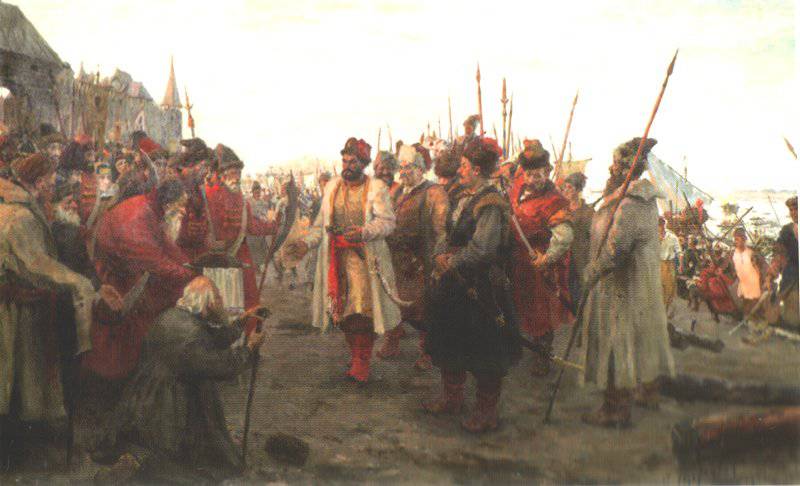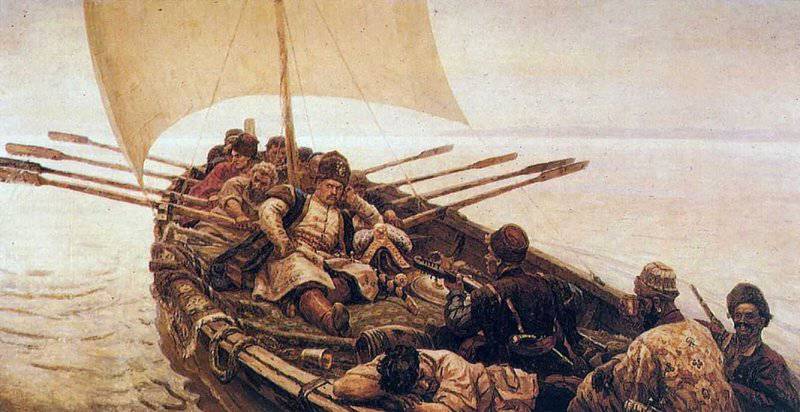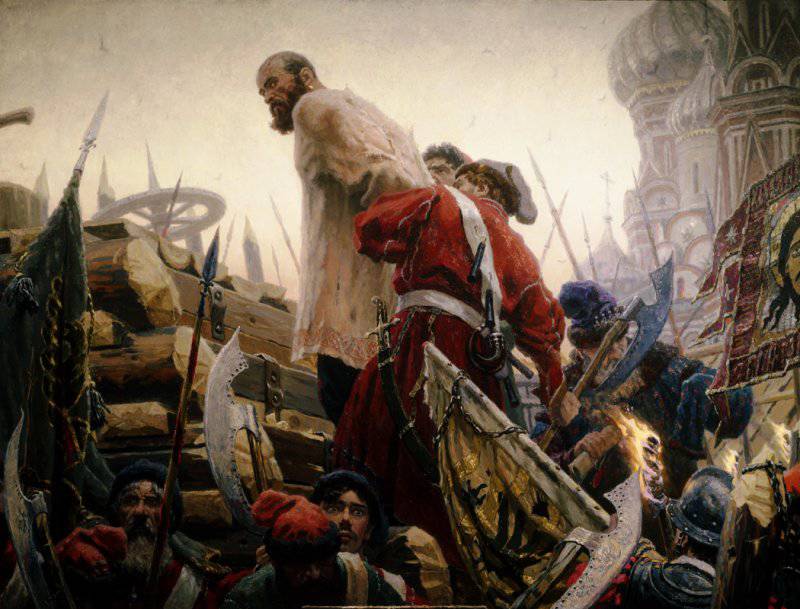Stepan Razin - the embodiment of popular anger
The amazing, adventurous life of a freedom-loving, extraordinary man, a successful chieftain, passed on the battlefield. The personality of Stepan Timofeevich fanned by fame, which any crowned autocrat can envy, is attractive to the Russian people, primarily because of its open and desperate character. Stepan Razin in folk tales personifies the leader of the peasants and the valiant Cossacks, the protector and the liberator.
The future formidable ataman was born in the Zimoveyskaya stanitsa on the Don. A lot is connected with this mysterious place for the Russian people. A little later, Emelyan Pugachev will be born, having passed through our country no less bloody road than the damned Stenka Razin. What anomaly in these places is not known. However, the fact remains that it was here that two of the most desperate rebels, so beloved and respected in Russia, were born.
By the middle of the sixteenth century, the Don Cossacks consisted of two specific strata: indigenous people and runaway or alien people. The “poor”, who had no permanent place of residence, often broke off in campaigns in order to rob the passing ships with goods and nearby territories. Such thieves' actions were called by Cossacks for “zipuns”, and although the indigenous wealthy residents did not approve such raids publicly, they still secretly financed them for a certain share in the spoils. One of these trips and began the popular "storm", whose name is Stepan Timofeevich Razin.
A small detachment of Cossacks, according to some data, its number was about 2-x thousand people, headed for the robbery down the Volga. At the head of the squad stood a young and successful ataman Stepan Timofeevich. The march quickly went beyond the usual raid characteristic of the Don Cossacks. At first, the government made rather sluggish attempts to pacify the Cossacks, and time was lost. As early as May 1667, the Cossack detachments defeated the archers and plundered the convoy of ships Shorin, who accompanied the ship with the exiles. Prisoners were released and willingly joined the Cossacks. Razin invaded Yaik, then headed to the Persian shores, where he captured the Persian princess famous from folk songs. Whether Stepan Timofeevich threw a Persian in the water or not has not yet been unequivocally established, but one thing is known that the daughter of Mamed-Khan Astarinsky from the Cossack captivity never returned.
The return to Astrakhan was triumphant for Stenka Razin. Governors were brought guilty, in exchange for a passage to the Volga. During his stay in the city, the ataman rode on strugues and in every possible way emphasized his independence and rebelliousness. Despite the promise to give the authorities all the booty and prisoners, the Cossacks did not give them anything, and went to Tsaritsino.
In the city, an attempt to prohibit Cossacks from visiting taverns was severely punished by Razin. In fact, Stepan Timofeevich refused to obey the tsarist administration and captured the city. The ataman responded to all threats with abuse and retaliatory promises of reprisals. In every possible way, Razin emphasized his non-acceptance of the existing regime of oppression, preached equality, cruelly punished those who were undesirable, but did not dishonor the king directly. Desperate Ataman well understood that the king in the minds of the population can easily be opposed to hated voivods and greedy boyars, which he actively used in his speeches and deeds. The defeated governor and military commanders Stepan Timofeevich publicly used rods, which also raised his authority in the eyes of his subordinates.

Each city occupied by Razin passed to the Cossack administration and adopted their lifestyle. Many joined the valiant and riotous armies. Chiefs, gentlemen, boyars who were disagreeable to the local population were ruthlessly exterminated, and daughters from noble and noble families, at best, were married to simple peasants or Cossacks. Interestingly, Stepan Timofeevich completely refused to recognize the wedding ceremony and organized the wedding ceremonies himself. The sacrament consisted in insane dances for a short time, after which the couple was declared the legal spouses.
After Tsaritsyn, Razin occupied Samara, Saratov and a number of other cities. Moving on the crest of the peasant war, which originated in 1670, the Cossack forces were all arriving and more and more resembled the insurgent army. In order to attract the people, Razin ordered to sheathe one of his ships with red cloth and set the unknown prisoner as Tsarevich Alexei, and covered the second boat with black covers and spread rumors about the presence of Patriarch Nikon on it. Thus, Stepan Timofeevich actively tried to discredit the image of the sovereign, not expressing direct intentions about the overthrow of the autocracy. Razin indicated that he was fighting for the tsar, but against the governors who had been enticed, the boyars and other nobles.
However, in the campaign, the ataman constantly drank, brawled and indulged in various bloody entertainment. Gradually, he lost his original image of a defender and was transformed into a possessed, ruthless killer, driven by the opinion of the crowd, magnified by his achievements and victories. The measures applied by Razin’s environment to the sovereign's henchmen were very cruel. The unfortunate were hanged, wheeled, drowned and tortured in various sophisticated ways. The punishments were intimidating. Cossack detachments were divided and occupied all new cities, the excitement swept not only the Volga region and the central part of Russia, but even reached the territories of the White Sea.
In 1670, the army of Razin suffered its first failure in the siege of Simbirsk, and already in early October it was defeated by the royal army of 60 thousands of soldiers under the command of Baryatinsky. Stepan Trofimovich was seriously wounded and, leaving the main part of his squad, fled to his native Don. Subsequently, Razin was given the Cossacks with his brother Frol.
They attempted a national ataman in the royal dungeons, but his courage was respected even by executioners. The hardy Cossack did not utter a word, he did not ask for mercy and did not beg for mercy. A proud and surprisingly strong man, even in the face of imminent death, retained his dignity. The execution was terrible and painful. Stepan Trofimovich was cut off his arm, and then his leg, and only then the pitying executioner cut off the ataman’s head. By sentence, Razin should have been quartered, but death came faster. The indignation of the chieftain was caused by the behavior of his brother Frol, who, fearing a bloody spectacle, uttered the words of repentance. According to eyewitnesses, only then did Razin swear hard at him.
The amazing desperate life of a rebel ended in a chopping block, which is typical of the leaders of popular uprisings in Russia. The bloodthirsty crazy brigand remained in the people's memory as a hero-liberator. Is it everyone decides for himself. Stenka Razin belongs to those great and mysterious personalities who judge only story.


Information